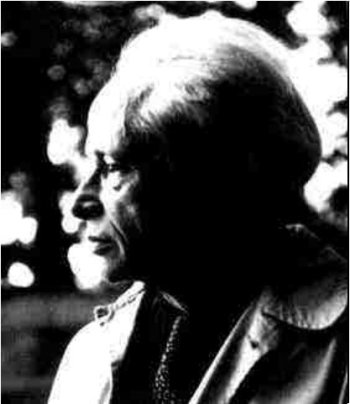Max Dehn
Dehn wrote one of the first systematic expositions of topology (1907) and later formulated important problems on group presentations, namely the word problem and the isomorphism problem. He was an intuitive geometer, stimulated by Hilbert's axiomatic approach to the subject. Dehn had solved the third of Hilbert's 23 problems - on the congruence of polyhedra.[4]

Figure 1; Max Dehn
Max Dehn had studied the squaring problem in 1903[1] and proved;
A rectangle can be squared if and only if its sides are commensurable.
If a rectangle can be squared then there are infinitely many perfect squarings.
'Commensurable' means in rational proportion, both being integer multiples of the same quantity [6]. Sherman Stein has provided simple proofs of this and other similar results [5].
Dehn studied at Göttingen under Hilbert's supervision obtaining his doctorate in 1900. From 1921 until 1935 he held the chair of Pure and Applied Mathematics at the University of Frankfurt but he was forced to leave his post by the Nazi regime in 1938. [4]
In 1940 he emigrated to the USA, travelling there via Scandinavia, Russia and Japan with Kurt Godel[3].
Once in the USA he taught at several universities and colleges, however he was unable to find a full-time position. Max Dehn, noted for work in topology, got a position at Black Mountain College. This college had no accredited degrees and taught mainly creative arts. Dehn was invited to give two lectures there in 1944. He realised that he could not lecture on advanced mathematics so he gave his lectures on Common roots of mathematics and ornamentics and Some moments in the development of mathematical ideas. Dehn joined the Faculty in 1945 and remained there until his death. Founded in 1933, the school was a reaction to the more traditional schools of the time. [4]
Among Black Mountain's first professors were the artists Josef and Anni Albers, who had fled Nazi Germany after the closing of the Bauhaus. It was their progressive work in painting and textiles that first attracted students from around the country. Once there, however, students and faculty alike realized that Black Mountain College was one of the few schools sincerely dedicated to educational and artistic experimentation. By the forties, Black Mountain's faculty included some of the most important artists and thinkers of its time: Walter Gropius, Willem de Kooning, John Cage, Merce Cunningham, and Paul Goodman.Students found themselves at the locus of such wide ranging innovations such as Buckminster Fuller's Geodesic Dome and some of the first Performance Art in the U.S. [4].
Max Dehn was the only mathematician ever to teach at the College which closed in 1956. Despite Black Mountain's contribution to C20th Art, in mathematical circles the posting at Black Mountain is considered low level for someone with Dehn's outstanding research record. One might expect Dehn to have been frustrated by the paucity of serious mathematics students at Black Mountain; yet when queried about that, he replied, “Not at all. In fact, I have been very fortunate. In my sixty years of teaching I have had at least fifteen real students” [2].
Dehn thrived there. In addition to mathematics he taught philosophy, Latin, and Greek, and as several student memoirs attest, he became a revered and beloved figure, remembered especially for the impromptu natural history lessons he gave on hikes in the nearby mountains, his unorthodox approach to the teaching of philosophy (via the Socratic method), and his friendly attitude toward students, among whom were two (Peter Nemenyi and Trueman MacHenry) who went on to receive Ph.D.’s in mathematics. [2]
Max was well known for his conversations, including long breakfasts with Buckminster Fuller and his wife. Paul Chessin, a student of Max Dehn recollects "Max would hold forth in the Rathskellar (the only campus beer establishment within the Big Ten Universities). We learned more in the beer stube - such as his personal life. He was the black sheep in his family. "[4] Dehn was an outgoing, generous man, esteemed by students and colleagues alike for his humanity, his breadth of intellectual and cultural interests, and his love and knowledge of the outdoors.
References
- 'Über Zerlegung von Rechtecken in Rechtecke', Max Dehn Journal Mathematische Annalen, Publisher Springer, Volume 57, September 1903
- 'Black Mountain College: Sprouted Seeds—An Anthology of Personal Accounts' , Mervin Lane, ed., University of Tennessee, 1990. p. 298
- 'Max Dehn, Kurt Godel, and the Trans-Siberian Escape Route' by John Dawson, Notices of the AMS
- The MacTutor History of Mathematics archive article on Max Dehn
- 'Ch 5 Tiling , 'Ch 6 Tiling and Electricity' Mathematics, The Man-Made Universe, Sherman K. Stein, Freeman 1976
- Collins Dictionary of Mathematics p88, Borowski & Borwein